Flash floods to deep freeze: The climate disasters that impacted North America in 2021
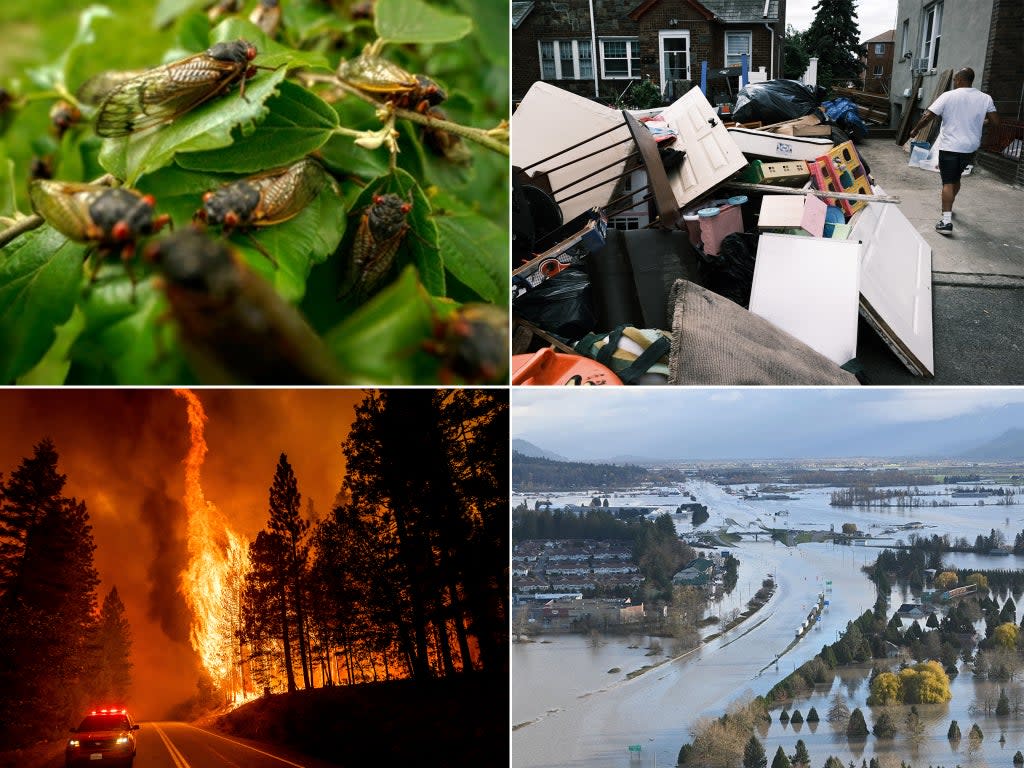
From floods to deep freezes, from wildfires to torrential rain, here were the biggest climate disasters in North America this year, as the impacts of the climate crisis were felt more acutely by residents across the continent.
January
California saw severe flooding in late January which led to mudslides in areas where record-breaking wildfires had ripped through months earlier.
In northern San Luis Obispo County, halfway between Los Angeles and San Francisco, 14 inches of rain fell in a 48-hour period. East of LA, 8,000 people were evacuated from their homes in the foothills below the burn scar of September’s 20,000-acre El Dorado Fire.
Highway 1, the picturesque route which hugs the Big Sur coastline, was closed after a cliffside collapsed in torrential rain. Landslides in the San Francisco Bay area damaged two dozen rural ranch houses, with one woman treated for broken bones after mud swept through her home.
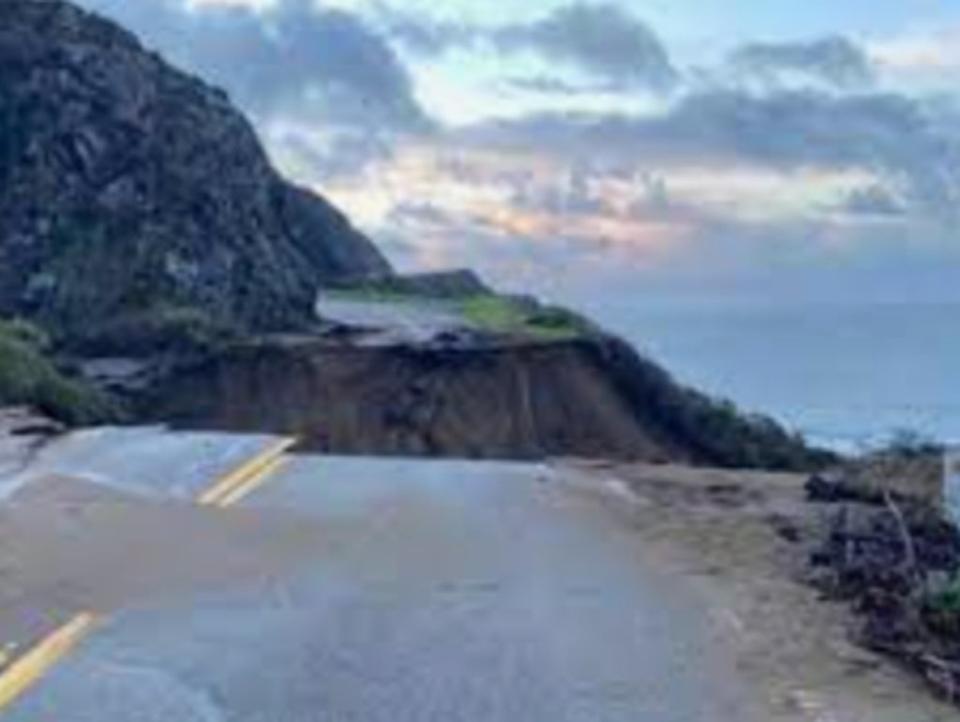
Wildfires, which are becoming larger and more unpredictable due to climate change, leave a treacherous landscape long after flames are extinguished.
Fire consumes the trees and vegetation which give land stability, and dries out the soil which holds moisture. This makes land, particularly in mountainous regions, more prone to slippage during downpours.
February
An Arctic blast brought a deep freeze to Texas in early February, causing much of the state power grid to collapse, swiftly followed by its water systems. Millions of Texans were left in blackout after the spike in demand for heat during sub-zero conditions overwhelmed the grid.
Conservatives railed against “frozen wind turbines” – although it was a shambles of greater complexity. Coal and gas power also became limited, at a time when Texas needed it the most, amid a dismal lack of planning by the state energy agency. Compounding the disaster was the fact that the Texas has refused to join an interstate electrical grid, meaning it had no back up in its moment of need.
There were at least 69 deaths during the bout of extreme weather which also impacted Louisiana and Oklahoma. The cost of recovery from the deep freeze has been estimated at $50bn.
Some scientists suggest a connection between the cold snap and climate change, linking rapid heating of the Arctic to episodes of extreme weather in mid-latitude regions like North America and Europe. However other researchers urge caution when attributing individual cold events to the climate crisis and it is still a topic of intense debate among experts. In general, evidence suggests that global warming will likely lead to milder winters in the mid-latitudes.
March
In early March half-a-dozen homes were severely damaged during storms on the Hawaiian island of Maui when more than 13 inches of rain fell in less than 12 hours. The heavy rains prompted evacuations from the small community of Haiku after officials feared that a 136-year-old dam would be breached by flood waters.
“This is really an example of climate change in the present day,” Suzanne Case, who leads Hawaii’s Department of Land and Natural Resources, said at the time.
“We have a flood emergency because of the heavy rain bomb. And we’re seeing these more and more across the island chain – more frequent and more extreme events.”
Early spring brought repeated flash flood warnings on Maui during which time three tourists died after being swept out to sea.
April
After a 17-year wait, cicadas known as “Brood X” burst from underground hibernation sites across central, eastern and southern states this spring.
While it’s typical for the brood to emerge periodically, scientists noted this year that the insects began swarming earlier than unusual. The soil had reached 64F (17.8C) - the optimum temperature for cicadas to hatch – sooner than expected.

Scientists also warned that as expanding urban development leads to more forests being cut down, much of the natural habitat of cicadas is being removed. Combined with more unpredictable weather and seasons, it is decimating population numbers.
The climate crisis is not only disrupting the natural rhythms of Brood X: a 2019 study found that rising global temperatures is putting more than 40 per cent of insect species at threat of extinction.
May
More than seven inches of rain in a matter of hours, followed by at least three tornadoes, left a trail of destruction across Alabama in early May.
In Birmingham, the state’s largest city, roads were submerged by floodwaters and blocked by downed trees. Properties were damaged from Texas to Virginia, and 100,000 homes and businesses left without power. Three people died and dozens more were injured.
In Mississippi, forecasters confirmed 12 tornadoes in the same period while flash flooding impacted the Gulf Coast.
The US is the world’s tornado hotspot with an average of 1,200 each year, a quirk of the country’s unique geography that leads to mixing of hot and cold air flows.
It’s tricky for scientists to figure out if there’s a link between tornadoes and climate change. That’s partly due to a lack of data on the short-lived events, which makes it difficult to spot trends compared to, for example, heatwaves or sea-level rise.
And if it feels like tornadoes are becoming more frequent, there may be good reason. The number of “storm chasers” increased with the rise of cable news in the 1990s, coupled with more and more Americans owning cameraphones. While a twister that lasts a few minutes may have gone undocumented in the past, its chances of being recorded today are higher.
At present, it doesn’t appear that climate change is causing more tornadoes – but tornado season has become more varied.
The National Severe Storms Laboratory in Norman, Oklahoma, located within “Tornado Alley”, published a study in 2014 that revealed in the past 50 years, clusters of tornadoes have become more common. While the number of days per year with tornadoes dropped, there was an uptick in days when more than one tornado appeared. Scientists remain unsure as to why this is happening.
Perhaps the most alarming discovery is that tornado alley appears to be shifting to the east.
A 2018 study found that over four decades, the number of tornadoes of moderate size and above has increased east of the Mississippi, and west of Appalachia. At the same time, weather conditions that make it more likely for a tornado to form had moved to the east, the research noted. It’s yet to be determined if this is because of the climate crisis.
June
A record-shattering heatwave in western Canada and the US Pacific Northwest led to hundreds of deaths as temperature records were broken - and broken again - on consecutive days in June.
Canada set a record temperature of 49.6C (121F) – more than 4C above the previous record of 45C (113F). Meanwhile, Seattle and Portland hit new highs of 42.8C (109F) and 46.7C (116F) respectively. Both records are several degrees above previous highs.
Meteorologists say the unprecedented conditions were caused by a “heat dome” – an unofficial term given to an area of hot air high up in the atmosphere which lingers for a prolonged period of time, trapping in heat in the region below.
The extreme heat also played into a ferocious wildfire season. Dozens of fires broke out across British Columbia with many situated around the city of Kamloops. The small village of Lytton was all but destroyed just days after it had seen Canada’s all-time highest temperature. Two deaths were later confirmed.
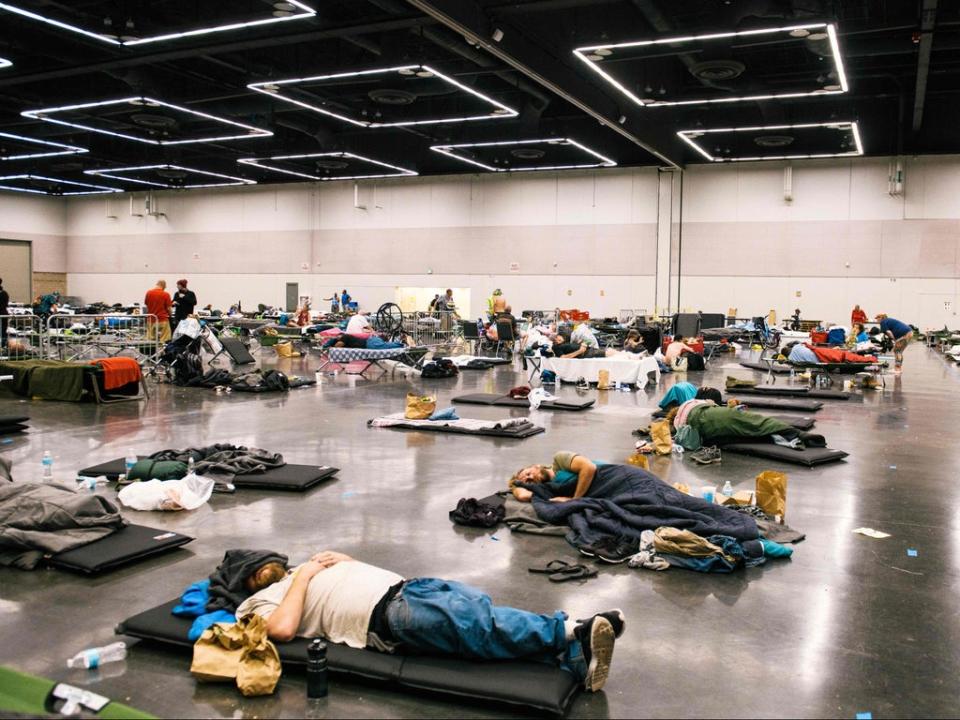
The deadly heatwave was made at least 150 times more likely by the climate crisis, a rapid analysis later concluded. An international team of climate scientists found that the recent record heat would have been “virtually impossible” without human-driven global heating.
The staggering temperature records left scientists stunned.
“It’s an extraordinary event,” Dr Geert Jan van Oldenborgh, climate scientist and co-leader of the World Weather Attribution initiative, a group of researchers tracking the fingerprint of the climate crisis on extreme weather events, said.
“Within our knowledge, this [heatwave] is basically impossible. It’s surprising and shaking that our theoretical picture of how heatwaves behave has been broken so [dramatically].”
“We are entering uncharted territory,” added co-author Prof Sonia Seneviratne, a climate scientist at ETH Zurich in Switzerland.
July
A fire on the surface of the Gulf of Mexico erupted after a gas leak from an underwater pipeline at the beginning of the month. Footage of the fire, appearing to boil the ocean’s surface with bright orange flames, went viral.
The fire, roughly 150 yards from a drilling platform in Mexico’s Yucatan peninsula, took around five hours to put out, according to Mexico’s state-owned Pemex petrol company.
No one was injured and there was no oil spill, the company added. A lightning strike was ultimately determined to be the cause of the whirling fireball.
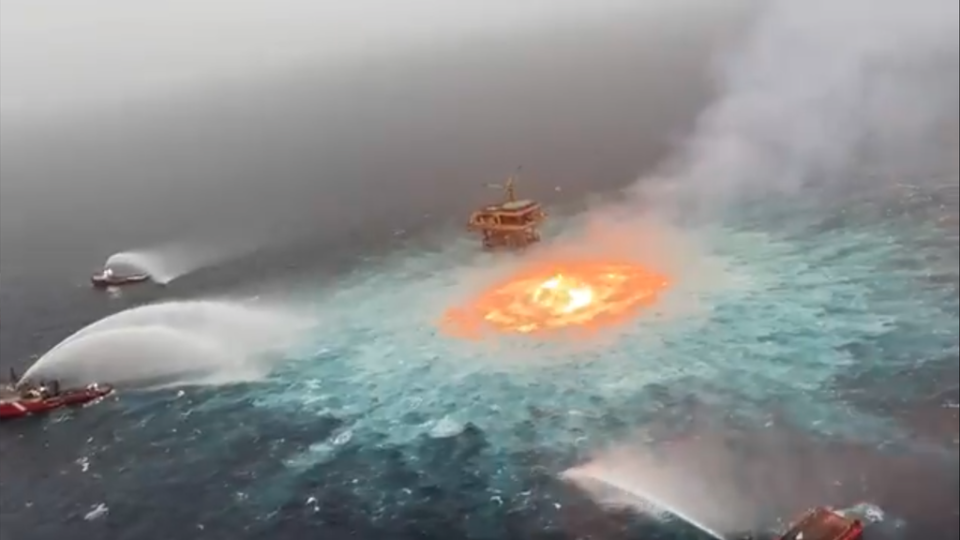
PEMEX also said its “immediate actions to control the fire” meant it had “avoided environmental damage,” though many took issue with this claim, since undersea gas leaks have grievously harmed ocean life.
While lightning was the direct cause of the fire, environmental groups in Mexico said that this latest catastrophic breakdown of fossil fuel infrastructure in the Gulf represented a larger “ecocide” the industry has conducted against the planet by perpetuating the climate crisis.
August
The monster Dixie Fire in northern California grew to the second largest fire in state history this summer. In August, it set the dismal record of being the first known wildfire to have crested the Sierra Nevada mountain range, burning from the western slope to the eastern valley.
The fire broke out on 13 July and by the time it was contained three months later, it had burned nearly 1 million acres, the state agency, Cal Fire reported.
This summer saw historic drought and sustained high temperatures across the western US, turning trees, brush and grasslands into a tinderbox. Over the past 30 years, the climate crisis has made the west increasingly hotter and drier, fuelling more extreme wildfires.
A so-called “megadrought” also caused the federal government to declare a water shortage on the Colorado River for the first time, triggering mandatory cuts that will come into effect in southwestern states next year.
Lake Powell and Lake Mead, which supply water to 40m people and sustain 4.5m acres of agriculture in the southwest, dropped to alarming lows. In northern California, Lake Oroville’s hydroelectric power plant was shut down for the first time because the water level declined so far.
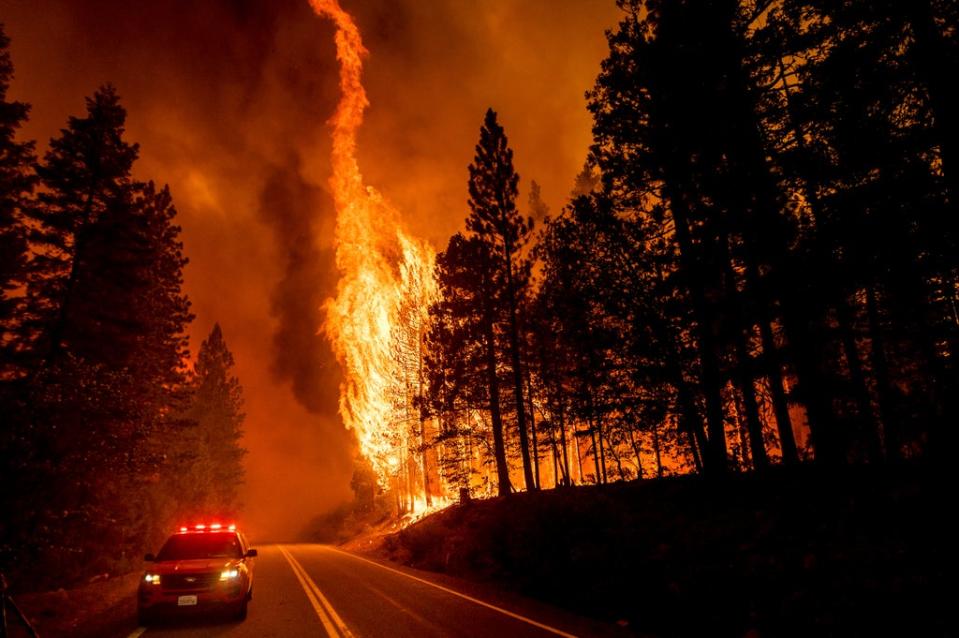
The same month in Tennessee, catastrophic flooding claimed the lives of 22 people including twin toddlers. Siblings Ryan and Rileigh Rigney were swept away from their father when floodwaters swamped their apartment complex in Waverly, WSMV reported.
Some 17 inches of rain fell on the county in the space of a day, and much of it in a six-hour period. “It was something like the quickness of a tornado I guess. Someone described it as a tidal wave,” said Waverly’s Mayor Wallace Frazier.
Rising global temperatures is making heavy downpours and subsequent flash flooding more likely in certain regions. In the past six decades, precipitation during the southeast’s largest storms has jumped by almost a third, according to the 2018 National Climate Assessment.
September
Not since Superstorm Sandy barrelled into New York nearly a decade ago, has the city been rocked by such a brutal and deadly storm. The remnants of Hurricane Ida wreaked a devastating path of destruction across the Northeast at the beginning of September leaving at least 43 people dead, including a two-year-old boy.
A number of people died after being trapped in submerged basement apartments or in cars swept away in flash floods.
In Elizabeth, New Jersey, five people were found dead after an apartment complex flooded, according to a city spokesperson. A 70-year-old man died when his vehicle was swept away by flood waters in Passaic, New Jersey after firefighters in scuba gear managed to pull his wife and son from the car.
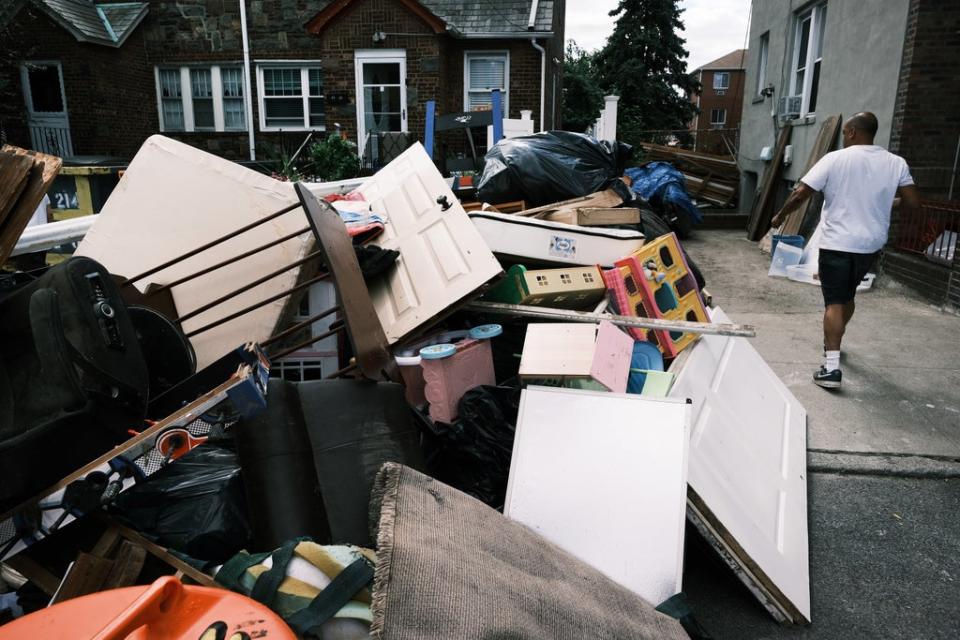
Tornados tore through New Jersey and Maryland, ripping apart homes. In the Philadelphia suburbs, the Schuylkill River burst its banks leaving neighbourhoods underwater.
Worsening Atlantic hurricane seasons are leading to the displacement of thousands of people in Mexico and Central America. Extreme weather, coupled with rapid urban expansion, led to dozens of landslides this year. On 10 September, a landslide on the outskirts of Mexico City killed four people and forced 140 families from their homes.
Large areas of Mexico have been found to be prone to landslides and flooding, according to research.
Ida is the joint-fifth strongest hurricane ever to make landfall in the US. Several factors linked to the climate crisis are helping to fuel more powerful, destructive storms like Ida, scientists say.
The latest report from the Intergovernmental Panel on Climate Change (IPCC), the world’s leading authority on climate science, found that storms with sustained higher wind speeds – in the Category 3-5 range – have likely increased in the past 40 years.
The ocean absorbs over 90 per cent of excess heat caused by greenhouse gas emissions from the burning of fossil fuels and that warm water feeds hurricanes.
“There is more energy available, so intensification of these hurricanes is expected,” Dr Susan Lozier, president of the American Geophysical Union and an expert on the interaction of oceans, hurricanes and climate change, told The Independent earlier this year. “And intensification brings more winds.”
As the planet warms, more moisture is held in the atmosphere, which means that storms also bring the possibility of a lot more rainfall.
October
An atmospheric river which pulled in from the ocean may have deluged California but it did little to change the trajectory of the state’s long-term drought.
The 2021 winter forecast revealed that the chance of rainfall was significantly below average while hotter temperatures were of above-average likelihood.
Water shortages remained in every county after the Sierra Nevada snowpack, which provides about one-third of the California’s supply, did not produce the run-off expected earlier in the year. In spring, the snowpack was only about 59 per cent of average, California’s Department of Water Resources reported.
Lake Oroville, rose more than 20 feet due to the storms but still was just 27 per cent capacity. While the storms brought some respite, much more rain is needed to lift California out of the mega-drought, officials say.
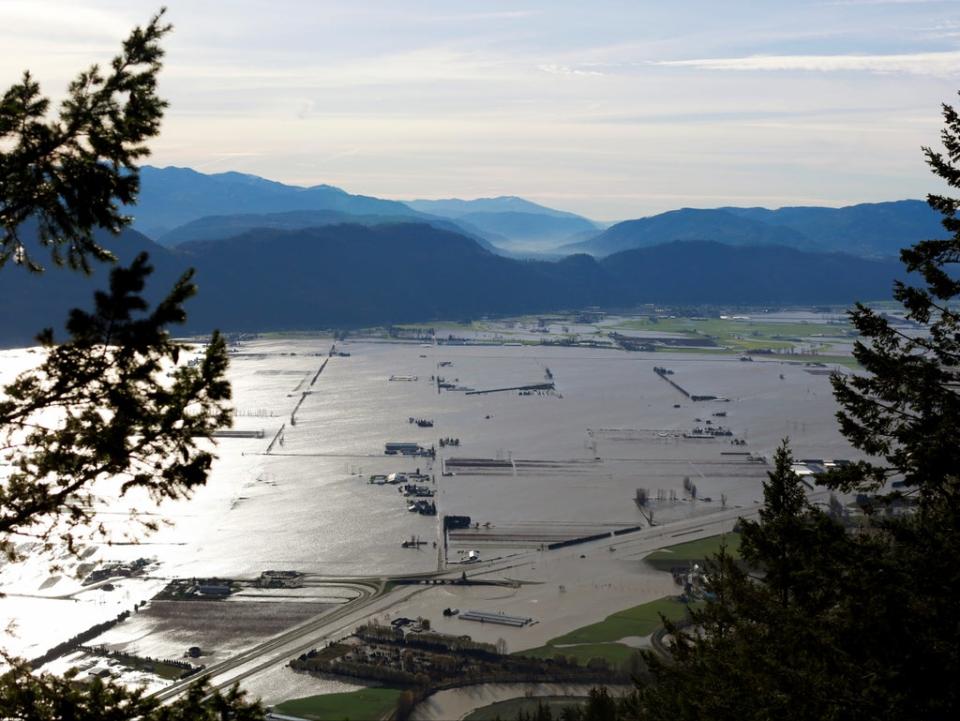
November
After the summer of deadly heat and wildfires, heavy downpours and powerful winds brought severe flooding and landslides to British Columbia in what public officials called a “once-in-500-year” event – and which scientists linked to the climate crisis.
Torrential rain destroyed roads, cut off several mountain towns and displaced around 18,000 people. The city of Vancouver became an island, marooned from the rest of Canada after the extreme weather took out its road and rail networks. At least five people were killed.
Burn scars from the summer’s extreme wildfires in the province heightened the flood and landslide threat as the absence of vegetation and trees made ground unstable. The risk can last for a number of years after a fire has ripped through.
The series of devastating events – heatwave, fire, flood and landslides – are what scientists describe as the compounding effects of the climate crisis. The most recent IPCC report notes that as global heating ticks up, these compound impacts will accelerate.
December
From the Rocky Mountains to the Great Plains, early December saw areas experiencing record heat at a time of year when many were preparing for frozen ground and snowfall.
In Denver, an 87-year-old record for number of days without snowfall was broken. The Colorado city hit a high of 73F (22.8C) on 4 December – tying a record set in 1973.
In the Canadian province of British Columbia, the town of Penticton experienced its highest December temperature in recorded history at 72.5F (22.5C). Salt Lake City, Utah had no snow through November, for only the second time since 1976.
In Montana, wildfires tore across prairies after high temperatures, winds, and months of drought. Several dozen homes, along with businesses and grain elevators, were destroyed in the rural community of Denton. Montana, along with other parts of the Mountain West, has warmed about two degrees Fahrenheit over the past century due to global heating.
On 10 December, a powerful tornado outbreak tore across six states, killing dozens of people. Entire towns were reduced to rubble and twisted wreckage, unrecognizable to those who lived there. Recovery efforts will go on “for years,” said one public official in Kentucky.
The tornadoes were part of a powerful storm system that ripped through Arkansas, Illinois, Kentucky, Mississippi, Missouri and Tennessee. At least 37 twisters were reported including a monster in Kentucky which traveled a potentially record-breaking 227 miles on the ground.
It’s too soon to fully explain the role that rising global warming played in the tornado outbreak, scientists say.
However at this early juncture, here’s what is known: Unusually warm, spring-like weather in December factored into the tornado outbreak.
Recent analysis found that while all seasons are impacted by climate change, winter is warming the fastest across much of the US, intensifying conditions in the atmosphere which can spawn such tornadoes.

